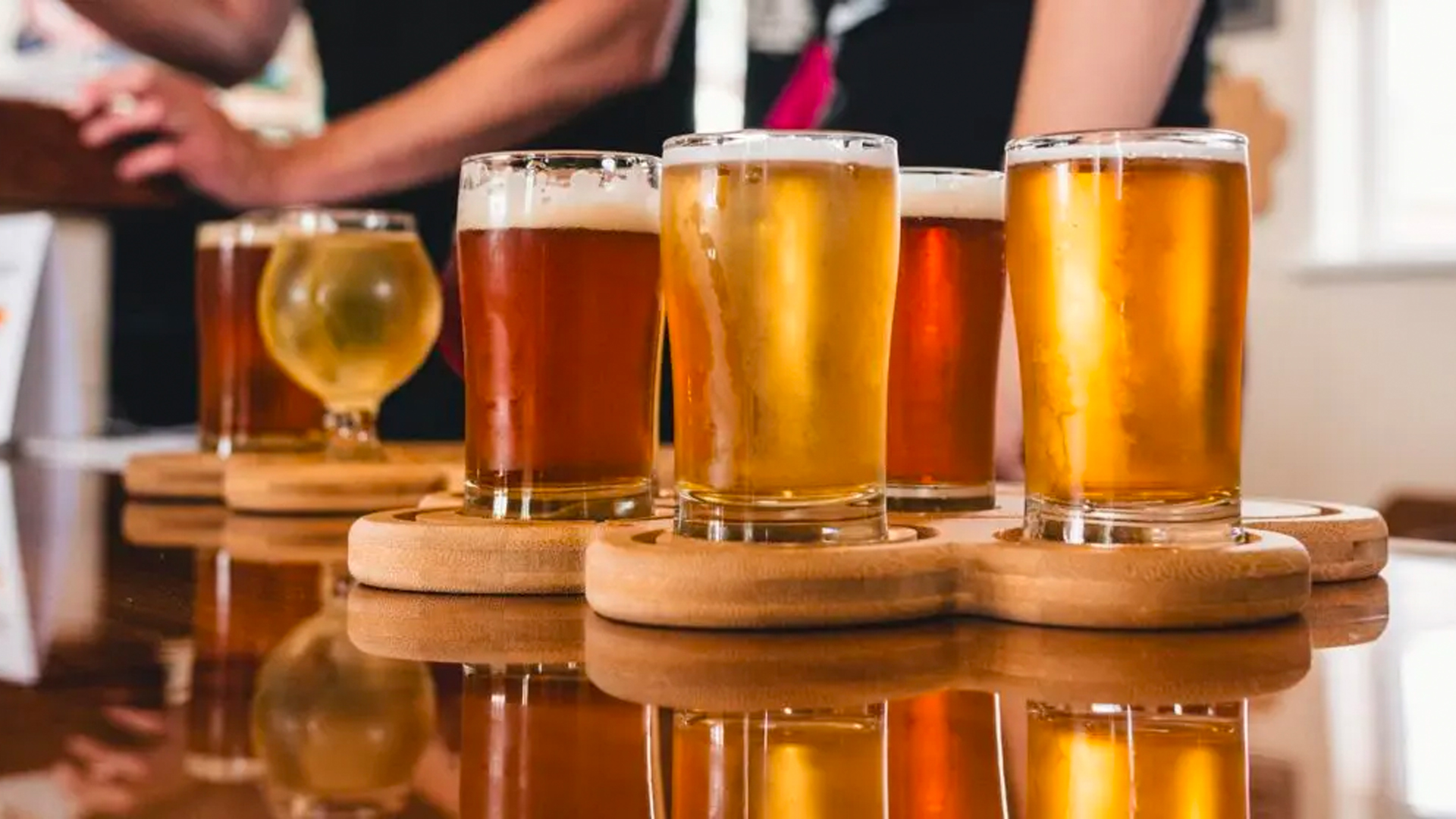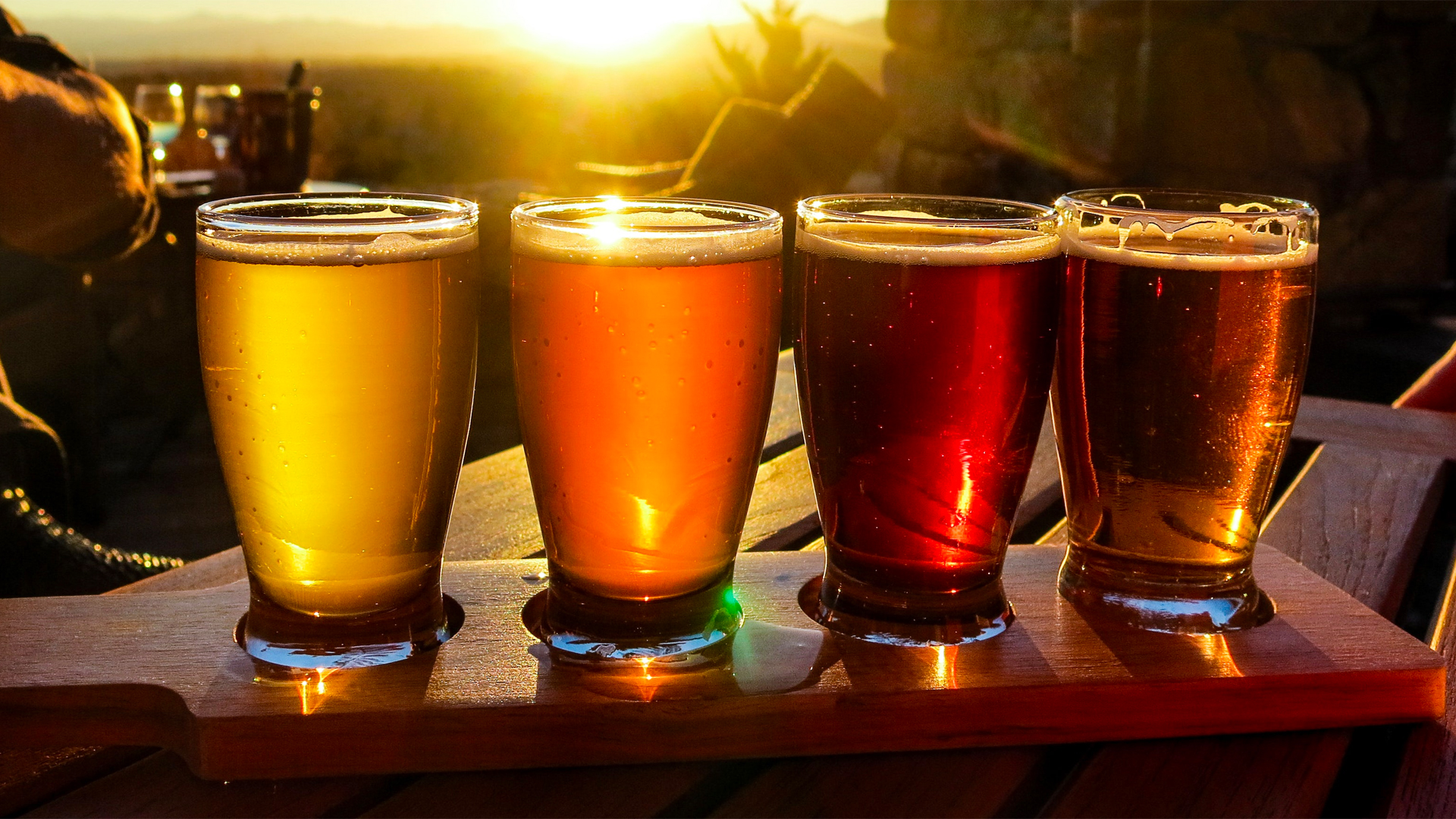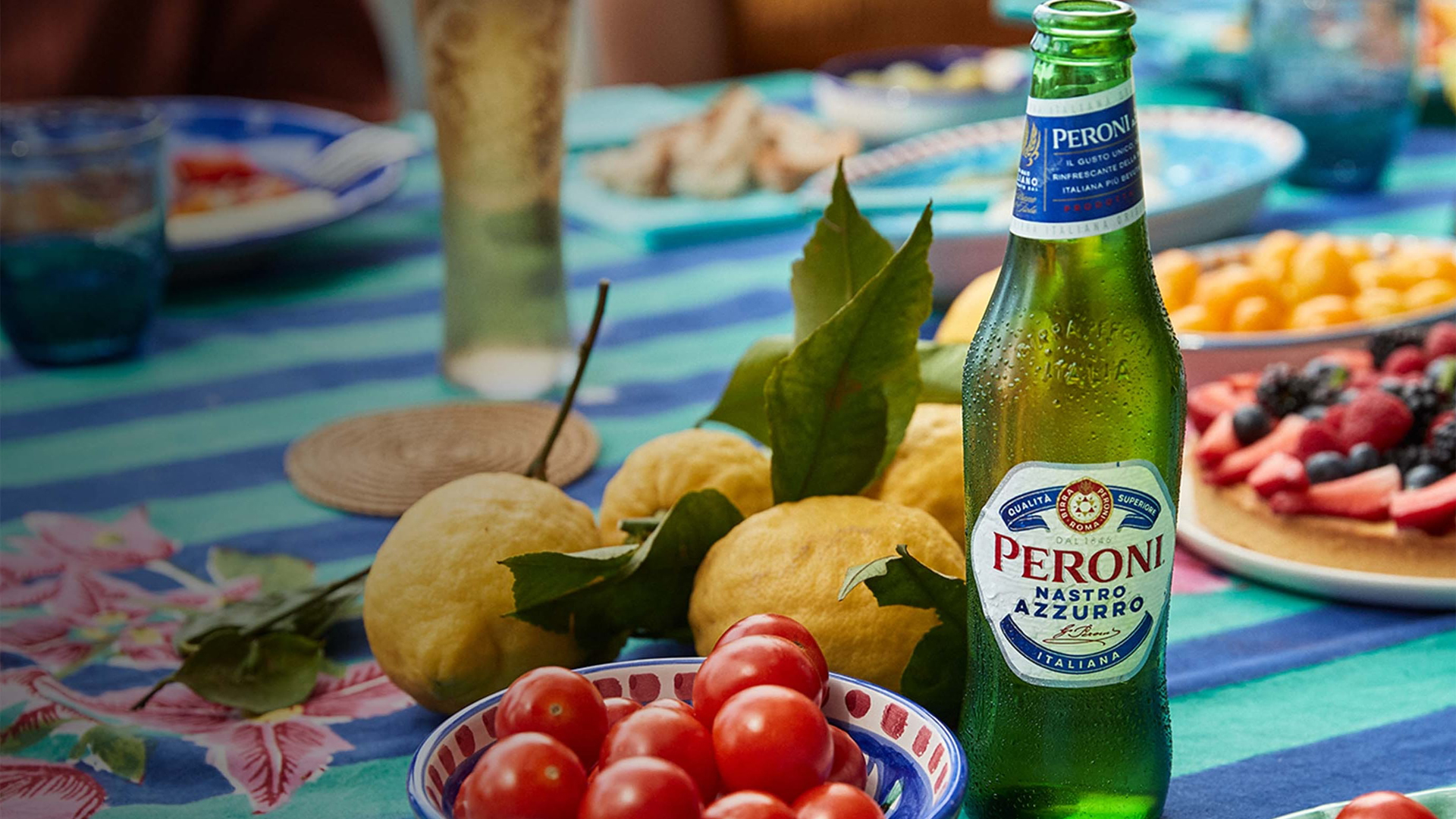Drinking culture in Italy isn't exactly known for beer, but if there is one Italian brand that comes to mind, it's Peroni. The company's namesake brand is the best-selling beer in Italy. Outside of Italy, Peroni's Nastro Azzurro, a golden colored beer, is also widely available in the United States and Europe.
The ubiquity of Peroni's Nastro Azzuro across the world is no accident. Today, Peroni is owned by an international conglomerate giving it a global reach and joining many one-time regional beers on the world stage. Peroni’s rise to fame began more than a century and a half ago.
Early Days of Brewing

Peroni began brewing beer back in 1846 in the town of Vigevano, in the Italian region of Lombardy. Italy was still just a series of independent states and kingdoms. Founder Francesco Peroni took advantage of the fresh glacial water in the mountains to brew a medium-strength beer and named it after himself.
Coincidentally, 1846 is the same year Italy's oldest continually operated commercial brewery began brewing beer. That brewery eventually became home to Manebrea, a smaller regional beer. Their brewery was built in the town of Biella, and Giuseppe Menabrea acquired the brewery a few years later to brew the product that today bears his name. Located near Turin, Manebrea, like Peroni, took advantage of fresh glacial waters for its beer. However, Manebrea also found a series of natural caves where he could age his beer. The caves naturally hold a temperature in the mid-50 Fahrenheit degree range. The company began with a light blonde recipe and later added a darker amber.
Other 19th Century Italian beers include Birra Moretti, founded in 1859, and Angelo Poretti, founded in 1877. These early breweries were all located in the north, close to the borders of beer-drinking Austrians and northern Europeans.
Peroni Gets Big

Meanwhile, Peroni grew rapidly in its first two decades. Francesco soon sent his son Giovanni to open another brewery in Rome. In 1864, when the facility opened, Italy had not yet even united. The decision was fortuitous though, because just seven years later, Rome would become the capital city. The decision to open a brewery in the city helped Peroni grow dramatically over the next half-century, and by the 1930s it would become the country's largest brewer.
Another reason Peroni saw an uptick by the 1930s was Mussolini's restrictions on alcohol. After 1871's unification, selling alcohol alongside food was widely accepted in Italy, but when Mussolini came to power, he implemented new restrictions on consumption. Higher-alcohol drinks were out, but lower-alcohol beverages like beer were granted special licenses.
The real growth in sales came after World War II, when drinking beer generally became more culturally accepted. The period also corresponded with economic growth, known as the "economic miracle" as the country modernized and expanded its industrial base. Peroni was a big winner of the growth.
Italy's wealth expansion peaked in 1963, the same year Carlo Peroni created the modern Nastro Azzurro recipe. The new recipe had more alcohol and a slightly more bitter taste. Nastro Azzurro literally translates to blue ribbon, and Peroni chose the name because of a fast Italian Ocean liner. In the pre-jet age, transatlantic ships competed, unofficially, for the fastest crossing times on regular service. An Italian ship, SS Rex, held the Blue Riband title for westbound crossing from 1933 to 1935. A source of Italian cultural pride, it served as the inspiration for the name.
The Secret Ingredient

Peroni's key ingredient is Italian-grown corn. Corn originally arrived in Italy from Central America during the Columbian exchange, but the high-yield grain proved popular in a country often on the brink of starvation. It also made a great addition to brewed beverages because of its high sugar levels. The beer also includes hops and barley, but the unique taste comes from the addition of corn.
Since 2007, Peroni has been cultivating Italian varieties of corn, especially around Bergamo. The older grain varieties such as Nostrano dell’Isola, Scagliola Marne and Marano share many genetic traits with the current Peroni variety known as Mas Nostrano.
Consolidation

In the late 1990s, beer and spirit companies around the world began consolidating into huge, global conglomerates. The large companies were better positioned to distribute local brands on an international scale. This transition allowed many smaller ethnic beer, liqueur, and liquor brands to become widely available in the United States.
This industry consolidation arrived in Italy in 2003 when SABMiller, a multinational based in Woking, England, purchased Peroni. The pairing didn't last long. A few years later, Anheuser-Busch InBev in turn purchased SABMiller, further consolidating the industry. But worried regulators would stand in the way of the sale, the new company agreed to sell off certain assets to minimize monopoly ownership of the market. Their plan included offloading Peroni.
Japanese brewer Asahi bought the Peroni brand from AB InBev in 2016, along with Grolsch, a Dutch brand, for $2.9 billion.
Since then, Peroni has developed an alcohol-free version of Nastro Azzurro for imbibers who like the taste of Peroni but don't want the side effects of alcohol. Released in 2022, the new alcohol-free beer is set to replace Peroni's Libera, a low-alcohol beer released in 2018.
Peroni continues to grow its market share at the global level. One great place to sample a Peroni is Italian American restaurants. Chains like Carrabba’s Italian Grill lead sales of the beer in the United States, but it can often be found at neighborhood bars and restaurants in Italian neighborhoods as well.
Ian MacAllen
Ian MacAllen is America Domani's Senior Correspondent and the author of Red Sauce: How Italian Food Became American. He is a writer, editor, and graphic designer living in Brooklyn. Connect with him at IanMacAllen.com or on Twitter @IanMacAllen.


